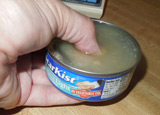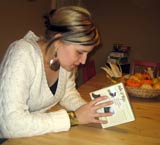How Much is Inside: What is Thread Count?
Are there really hundreds of threads per square inch of these sheets?
By Rob Cockerham |
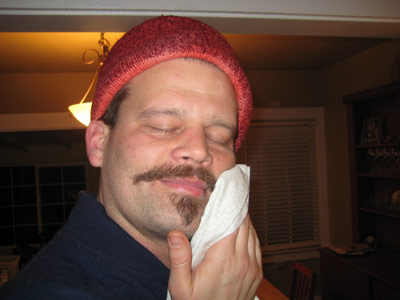
Pillowcases have a very prestigious place in our society. They keep our heads and faces comfortable through our night's sleep, provide a fashionable exterior to our pillows and help to protect them from vomit stains.
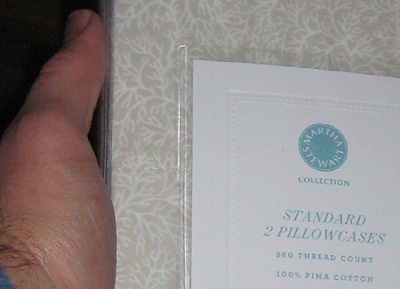
I've always sought the finest quality in my pillowcases, and to me, the "finest quality" has meant the highest thread count. Thread count simply refers to the number of threads per square inch of fabric.
If you use big threads to weave a sheet, the finished product will be thicker than if you use small threads. The finest sheets use very tiny threads, woven together to form a super-thin, delicate fabric. They do not advertise these as the thinnest sheets, or incredibly thin sheets. They call them high thread count.
As ancient weaving techniques have given way to modern techniques, the threads have gotten smaller and smaller, such that an increasing number can be crammed into one inch.
Thread count, like a surprising number of marketing metrics, is discouragingly troublesome to actually check for yourself. Take these $40 Martha Stewart brand pima cotton pillowcases, for example. The label says 360 thread count, but how much is inside?
On Friday night, we decided to find out.
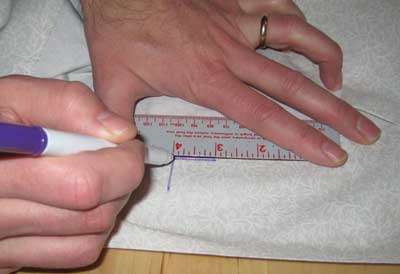
I marked a single square inch of material and brought out my massive stainless steel fabric scissors.
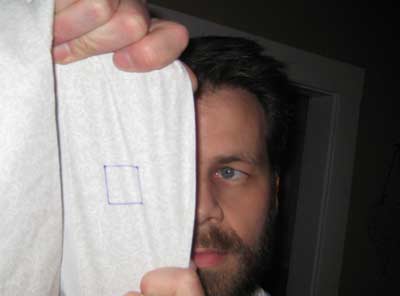
"Wait!" Mike yelled. "Don't cut up your $40 pillowcases!"
"Then how will I pull apart the threads and count them?" I replied.
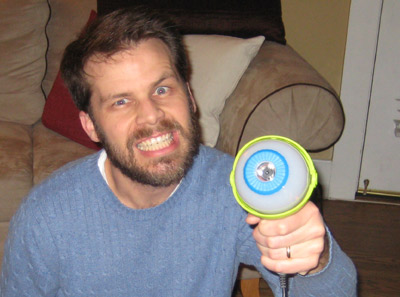
"Let's use the Eyeclops!"
Of course! The Eyeclops is my newest electronic tool, a super-powered magnifying camera, able to display anything at 200 times its actual size on the television screen. This was the perfect solution! I could count the threads and avoid cutting eyeholes in my luxurious new linens.(More information about the eyeclops magnifying camera)
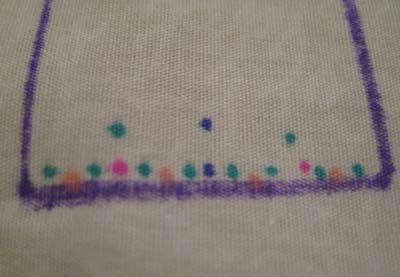
Even with a super-scope, It would be a tedious job. The damn threads were TINY, and they were all in a row, each exactly the same. We needed something to help guide us when we were exploring this surface at 200x magnification.
We needed landmarks.
With a set of June's fine-tipped felt pens, I marked the half-inch with a blue dot, and the quarter inches with a pink dot. I marked all the eighth-inches with a yellow dot, and split every sixteenth with a green one.
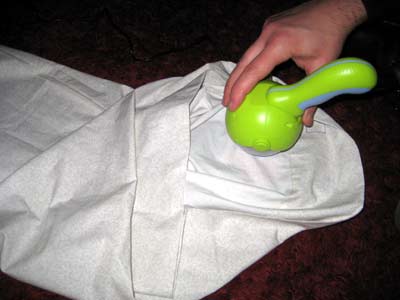
We plugged the eyeclops into the television, and took our first super-close look at the cloth.
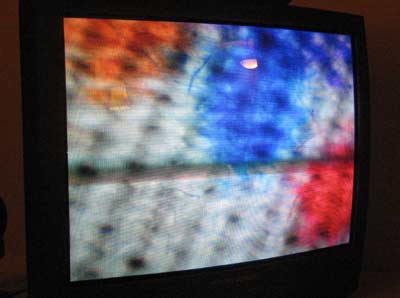
It was made out of ropes!
No, no, they were threads, but now they were each an inch and a half wide, instead of 150 micrometers. This was going to be easy, as long as we didn't lose our place as we were counting threads across the screen.
The colors made it easy. Counting horizontally, there were four threads covered in green ink, then six white threads until we got to the patch of yellow. The yellow glob colored six threads, followed by two white ones and four more green. In this way, counting colored threads and white threads, we made our way across the one square inch.
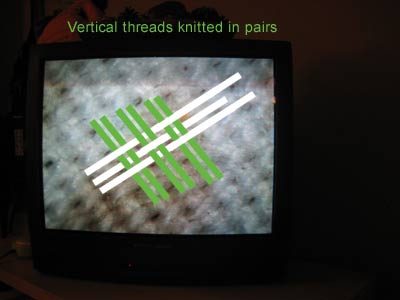
You may have noticed that all of those numbers are divisible by two, and that is because the horizontal threads (the weft) were grouped in pairs, like a buddy-system for threads.
I found out later that this "every other thread" knitting technique is called a "multi-pick" weave, and that it was designed by Bill Russell, the player-coach of the world champion Boston Celtics.
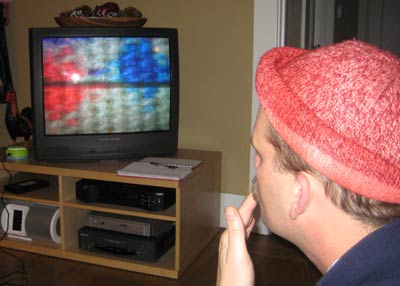
Mike handled the eyeclops while I called out each thread and kept notes about how many threads we had scanned.
We started out slow, but soon we picked up speed and were crusing along at 40 knots.
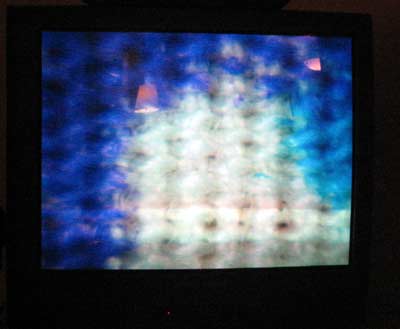
Finally, we reached the end of the row and added up all the threads so far: 178 threads across.
We were half done. Next, I grabbed two fine-tipped marker pens and put an alternating row of dots down the vertical edge of my one inch square. Then it was back to the eyeclops, to count the threads going the other direction.
Sure, in these magnified pictures, the fabric looks like a cargo net, but take my word for it, these pillowcases had a tighter weave than Ashanti.
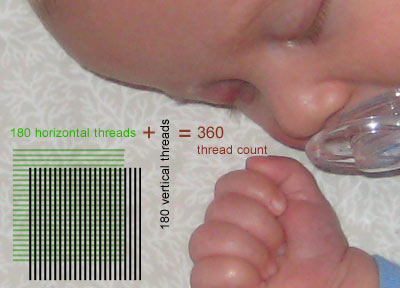
After 15 more minutes of knit picking, we had the vertical row of threads counted: 186 threads.
And then in a bit of unconventional fabric math, we added the totals for height and weight, to reach the total thread count for this pillow case: 364 threads!
Yes. It is true: Martha Stewart Collection pillowcases can join Xbox and Anderson Cooper as a legitimate member of the 360 Club.
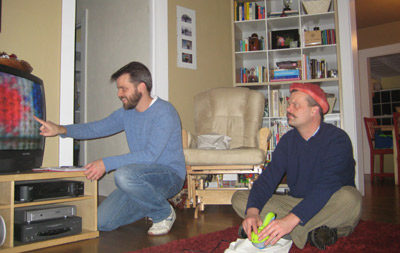
They had somehow packed 360 inches of thread into a single square inch. If all those 1" threads were layed end-to-end, we'd have 30 feet of thread.
And if all the thread from the entire pillowcase was unravelled, and twisted together, you'd have 80 feet of 375-ply twisted rope. Which is the perfect amount to use, when you are trying to escape from the confined unit tower complex at Alderson Federal Prison Camp.


